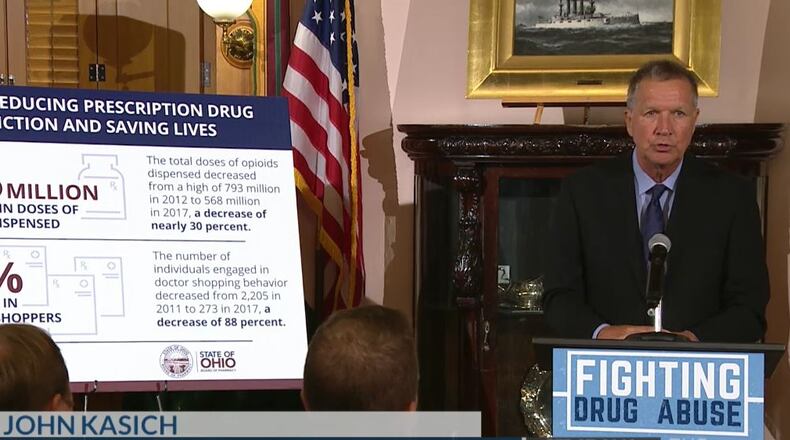The Path Forward: Addiction in Dayton
- » New challenge for recovering addicts: Finding a job
- » Can Dayton go from 'overdose capital' to a model for recovery?
- » 'A whole new life:’ Local people share their path out of the depths of addiction, and into long-term recovery
- » Mother of 7 rebuilding family after addiction
- » A day with Dayton's overdose response team
Overdose deaths dropped by 23 percent in the second half of 2017, according to the statewide report. State leaders from the Ohio Department of Mental Health and Addiction Services, Department of Public Safety and Board of Pharmacy also detailed efforts they say have led to a decline in opioid prescriptions and doctor shopping, and more interdiction of deadly fentanyl by law enforcement.
RELATED: Montgomery County number one in state for overdose deaths per capita
Fentanyl accounted for 3,431 accidental overdose deaths in 2017, nearly three-fourths of the total. Overall, fentanyl deaths increased 46 percent from 2016, the data shows.
Deaths involving cocaine climbed 39 percent in 2017 to 1,540, while heroin deaths dropped 46 percent to 987 and fatal overdoses from prescription opioids fell 7 percent to 523.
The report documents the stunning toll the opioid crisis has had on communities throughout Ohio, including 18,509 deaths between 2012 to 2017.
State leaders say some of the measures undertaken by the state are working. Among them, they said: Use of the Ohio Automated Rx Reporting System, which tracks drug prescriptions; and limits on opioid prescribing for acute pain.
Opioid prescriptions are down by more than 225 million doses since 2012, leaders at the press conference said. Doctor shopping behavior has also fallen 88 percent since 2011, they said.
Kasich warned users that all types of illicit substances are getting laced with fentanyl, and that taking any sort of street drug is like playing Russian Roulette.
“You are putting a revolver to your head,” Kasich said.
THE PATH FORWARD: Can Dayton go from ‘overdose capital’ to a model for recovery?
Kasich’s administration is spending more than $1 billion a year on fighting the opioid crisis, including providing addiction treatment through the Medicaid expansion and making naloxone available to first responders. That spending is worth it, he said, compared to the alternative costs of loss of life, incarceration, and paying for the ripple effects of addiction, including placing more children in foster care.
“It costs too much money to not deal with this,” he said.
The report includes previously reported numbers from each county that show Montgomery County was once again the per capita leader in overdose deaths with 521 in 2017. Since 2012, Montgomery County has lost 1,680 residents to accidental drug overdoses.
About the Author

